Faust (1926 film)
9.2 /10 1 Votes
4/4 Roger Ebert Director F. W. Murnau Duration | 8/10 IMDb 94% Rotten Tomatoes Genre Drama, Fantasy, Horror Country Weimar Republic | |||||||||||||||||||||||||||||||||
 | ||||||||||||||||||||||||||||||||||
Language Silent filmGerman intertitles Release date 14 September 1926 (1926-09-14) (Austria)5 December 1926 (1926-12-05) (US) Initial release September 14, 1926 (Austria) Music director Werner R. Heymann, Erno Rapee, William Axt, Wolfgang Dauner, Daniel Schnyder, Bernd Schultheis, Rolf Unkel Screenplay Gerhart Hauptmann, Hans Kyser Cast (Faust), (Mephisto), (Gretchen/ Marguerite), (Gretchens Mutter/ Marguerite's mother), (Valentin: Gretchens Bruder / Marguerite's brother), (Erzengel/ Archangel) Similar movies Bedazzled , The Seventh Seal , Ghost Rider , Mars Attacks! , 28 Weeks Later , The Devil's Advocate Tagline The Voice of the Tempter | ||||||||||||||||||||||||||||||||||
Einuiea feat crenguta hariton ion grosu faust 2007
Faust (German: Faust – Eine deutsche Volkssage) is a 1926 silent film produced by UFA, directed by F. W. Murnau, starring Gösta Ekman as Faust, Emil Jannings as Mephisto, Camilla Horn as Gretchen/Marguerite, Frida Richard as her mother, Wilhelm Dieterle as her brother and Yvette Guilbert as Marthe Schwerdtlein, her aunt. Murnau's film draws on older traditions of the legendary tale of Faust as well as on Goethe's classic version. UFA wanted Ludwig Berger to direct Faust, as Murnau was engaged with Variety; Murnau pressured the producer and, backed by Jannings, eventually persuaded Erich Pommer to let him direct the film.
Contents
- Einuiea feat crenguta hariton ion grosu faust 2007
- Plot
- Cast
- Production history
- Variant cuts
- Restoration and versions known to exist
- Reception
- Legacy
- References
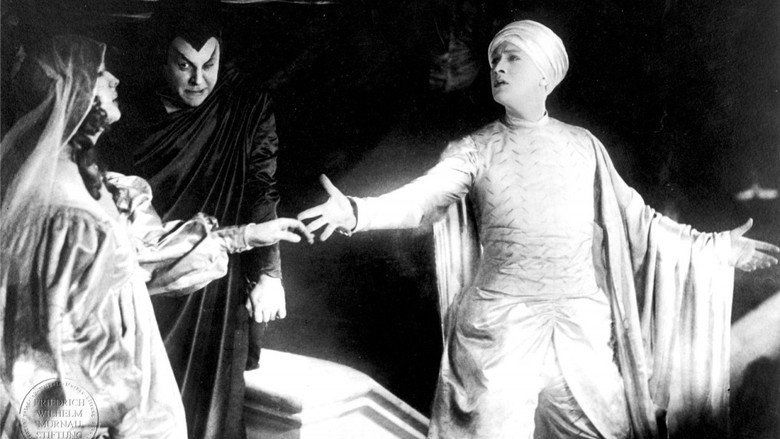
Faust was Murnau's last German film, and directly afterward he moved to the US under contract to William Fox to direct Sunrise (1927); when the film premiered in the Ufa-Palast am Zoo in Berlin, Murnau was already shooting in Hollywood.
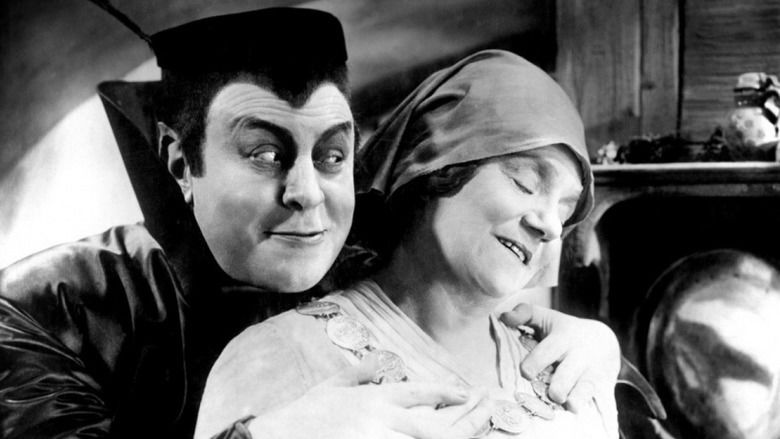
Plot
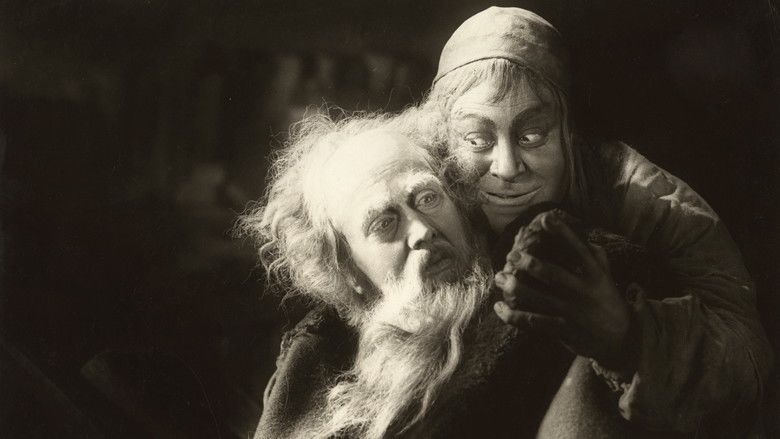
The demon Mephisto has a bet with an Archangel that he can corrupt a righteous man's soul and destroy in him what is divine. If he succeeds, the Devil will win dominion over earth.

The Devil delivers a plague to the village where Faust, an elderly alchemist, lives. Though he prays to stop the death and starvation, nothing happens. Disheartened, Faust throws his alchemy books in the fire, and then the Bible too. One book opens, showing how to have power and glory by making a pact with the Devil. He goes to a crossroads as described in the book's procedure and conjures up the forces of evil. When Mephisto appears at the roadside, he induces Faust to make a trial, 24-hour bargain with the Devil. Faust will have Mephisto's service till the sand runs out in an hourglass, at which time the Devil will rescind the pact. At first, Faust uses his new power to help the people of the village, but they shun him when they find out that he cannot face a cross. They stone him and he takes shelter in his home.
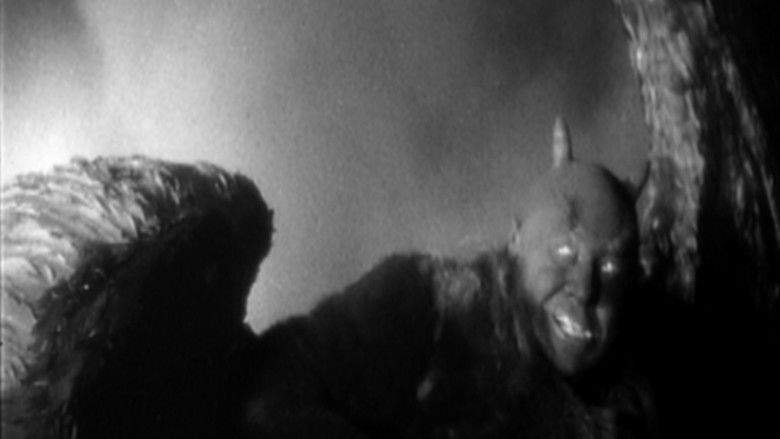
Faust then makes a further deal with Mephisto, who gives Faust back his youth and offers him earthly pleasures and a kingdom, in return for his immortal soul. Mephisto tempts Faust with the vision of a beautiful woman. He then takes him to a wedding feast in Parma, to meet the subject of his vision, an Italian Duchess. Faust departs with her, leaving the Devil to kill her groom. Just as Faust is making love to her the sands run out. He is obliged to seal the deal permanently in order to continue his love-making; he is Mephisto's forever.
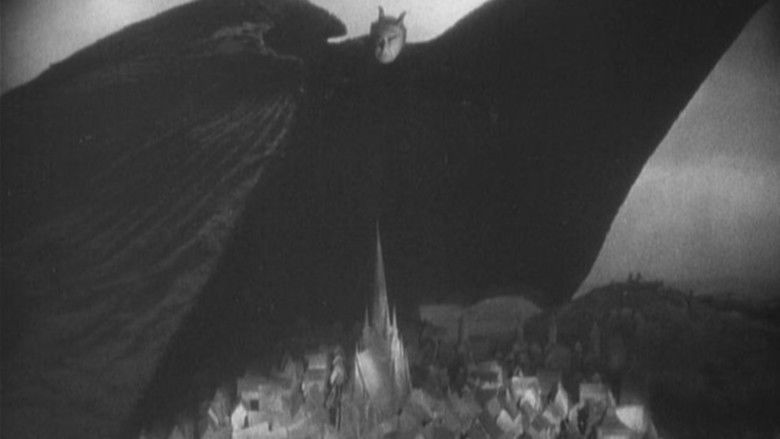
Faust soon grows weary of debauchery and yearns for "Home". Here Faust falls in love with an innocent girl, Gretchen, who is charmed into loving Faust by a golden chain left by the Devil.
Faust comes to Gretchen's room. The devil rouses the mother who sees them and drops dead from shock. The devil then incites her soldier brother, Valentin, to run home to catch her lover. Valentin and Faust fight a duel. The Devil intervenes and stabs Valentin in the back. He then goes around town shouting "murder". Faust and Mephisto flee on the back of a hellish steed.
Valentin condemns Faust for his murder and his sister as a harlot in his dying breath. She is put in the stocks and subjected to jeering. The girl has a child (by Faust) and ends up in the streets. In a blizzard she sees a vision of a warm cradle and lays her child down on the snow, where the child dies. Soldiers find her and she is sent to the stake as a murderess. Faust sees what is happening and demands Mephisto take him there. Faust arrives just as the fire has been started to burn his lover. Faust wishes he had never asked to have his youth back. Mephisto smashes the mirror with Faust's reflection and he loses his youth. He runs through the assembled mob towards Gretchen; and it is as an old man that Faust throws himself onto the fire to be with his beloved.
Gretchen recognizes Faust and sees him in her heart as a young man again as the fire consumes them together. Their spirits rise to the heavens. The angel reveals to Mephisto that he has lost the bet because Love has triumphed over all.
Cast
Production history
Murnau's Faust was the most technically elaborate and expensive production undertaken by UFA until it was surpassed by Metropolis the following year. Filming took six months, at a cost of 2 million marks (only half was recovered at the box office). According to film historians, Faust seriously affected studio shooting and special effects techniques. Murnau uses two cameras, both filming multiple shots; many scenes were filmed time and again. As an example, a short sequence of the contract being written on parchment in fire took an entire day to film.
Variant cuts
There were several versions created of Faust, several of them prepared by Murnau himself. The versions are quite different from one another. Some scenes have variants on pace, others have actors with different costumes and some use different camera angles. For example, a scene with a bear was shot with both a person in costume and an actual bear. In some versions, the bear simply stands there. In one version, it actually strikes an actor.
Overall, five versions of Faust are known to exist out of the over thirty copies found across the globe: a German original version (of which the only surviving copy is in the Danish Film Institute), a French version, a late German version which exists in two copies, a bilingual version for Europe prepared by UFA, and a version prepared by Murnau himself for MGM and the US market (July 1926).
Restoration and versions known to exist
The copy of the original German version lacks a number of scenes. With the copies available, a 106-minute reconstructed version has been released by Kino International with English intertitles on DVD. A commentary is also an optional extra on the DVD. The original intertitles have also been recovered.
The US version includes titles and scenes filmed especially by Murnau, where for example the scene in which Aunt Marthe offers Mephisto a drink that he rejects as causing heartburn: in the US version, Mephisto rejects the drink for having had alcohol, an ironic reference to Prohibition in the United States; again in the US version, Mephisto offers Marta a necklace, from the Great Khan of the Tartars, rather than the cousin from Lombardy, as Murnau believed the US audience would not have heard of Lombardy. One scene was done with a text juxtaposition, as again, Murnau believed the American audience wouldn't grasp the imagery by itself. This is also the only version having the originally conceived finale of the ascension of Faust and Gretchen into Heaven. In all others, the scene is rather more conceptual. Books appearing in the film were labeled or any plans with text were shot twice, in German and in English.
The bilingual version was prepared to be shown aboard trans-Atlantic ships traveling from Hamburg to New York City. Therefore, they catered to both American and German audiences.
The French version is generally believed to represent the poorest choice of scenes, both including the largest number of filming errors (e.g., showing assistants holding doors, actors slipping, Gretchen stepping on her dress, showing the stage maquette). It does hold takes that do not exist in any other versions, however.
Reception
Film review aggregator Rotten Tomatoes reported an approval rating of 94%, based on 18 reviews, with a rating average of 8.4/10. Japanese film director Shinji Aoyama listed Faust as one of the Greatest Films of All Time in 2012. He said, "I always want to remember that movies are made out of the joy of the replica. The fascination of movies is not their realism, but how to enjoy the 'real'. In that sense, I always have Faust in my mind as I face a movie, make a movie, and talk about a movie."
Legacy
The Readers Library Publishing Company published in 1926 a "Readers Library Film Edition", an adaptation of the film plot to novel form written by Hayter Preston & Henry Savage. The "Bald Mountain" scene served as the inspiration for the "Night on Bald Mountain" sequence in Walt Disney's 1940 animated film Fantasia.
References
Faust (1926 film) WikipediaFaust (1926 film) IMDbFaust (1926 film) Roger EbertFaust (1926 film) Rotten TomatoesFaust (1926 film) themoviedb.org
